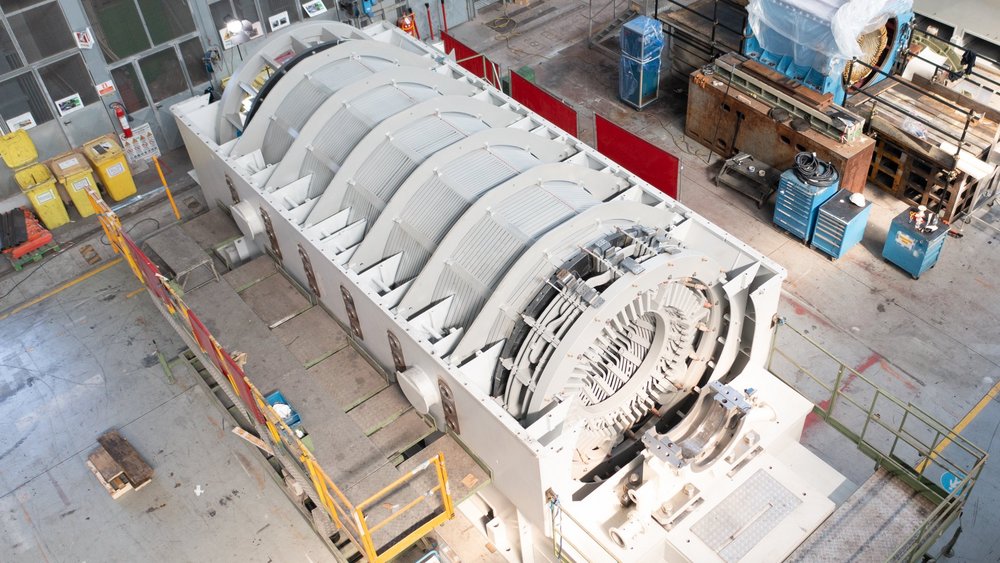Award for the supply of one hydrogen-ready GT26 gas turbine and one steam turbine, along with their respective generators.
Synchronous condensers
The intermittence of the renewable sources affects electric supply in terms of stability, voltage quality, reactive power and power factor control, fault-ride-through capability, inertia and short circuit power. Synchronous Condensers can compensate for these drawbacks, and are therefore an irreplaceable element for grid stabilization, both for the transition phase – and beyond.
All Ansaldo Energia Generators can be used as Synchronous Condensers – both as stand-alone equipment or integrated in other plants (simple cycles, combined cycles, wind farms, solar farms and energy storage facilities).
Synchronous Condenser packages strengthen the grid, particularly when installed in nodes where power electronics or renewable energy sources are connected.
In conventional power plants, the turbine-driven generator is decoupled from the turbine by a clutch, and operates as a condenser. This solution ensures maximum operating flexibility by making two operating modes possible:
- Power mode (turbine engaged);
- and Synchronous Condenser mode (turbine disengaged).

The same electrical generators can also be specifically installed as Synchronous Condensers for grid stabilization. Based on the shaft inertia and electrical parameters required by the network, this package is configured by combining standard turbogenerators with minor adjustments. A flywheel can be added to increase the inertia of the system.
Ansaldo Energia standard flywheels are designed for vacuum operation to minimize energy consumption.
Ansaldo Energia Synchronous Condensers deliver fast dynamic response in order to react immediately to frequency regulation, and are optimized for full remote control to allow management of the power grid with the click of a mouse.
In evidence
NUCLEAR ENERGY, FIRST GATE REVIEW OF THE EAGLES CONSORTIUM: ADVANCING DESIGN AND SAFETY FOR EAGLES-300
Ansaldo Nucleare, ENEA, RATEN and SCK CEN met in Mol, Belgium, from December 15 to 17 for the first Consortium gate review















